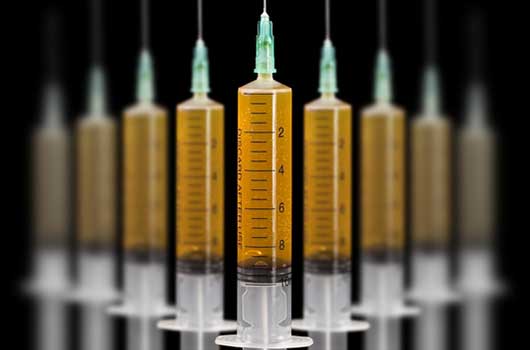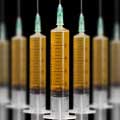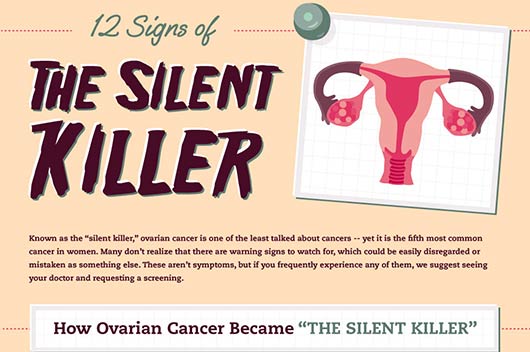
Don’t let your child fall ill from a disease that could have been prevented by a childhood immunization. As September approaches and you put together your back-to-school checklist, keep in mind that certain vaccines are required before your child can enroll in daycare or school.
This helpful guide includes the names and symptoms of the most common diseases, their vaccines, and the age at which you should immunize your child.
DISEASES PREVENTED BY VACCINATIONS
- Diphtheria • Caused by bacteria that live in the mouth and throat, it can cause a sore throat, fever, and chills. If undiagnosed and untreated, the bacteria can produce toxins that can lead to heart failure and paralysis. Diphtheria is spread through sneezing, coughing, and breathing. One in ten persons infected with the bacteria dies.
- Hepatitis A • This virus, which leads to liver disease, produces fever, loss of appetite, fatigue, vomiting, stomach pain, and jaundice. Although children younger than 6 years of age may not show any symptoms, approximately 100 people die from the disease each year. Hepatitis A is mainly transmitted from feces to mouth through contaminated food or water.
- Hepatitis B • Hepatitis B also causes liver disease and is spread through blood and other body fluids. The virus causes muscle and stomach pains, diarrhea, vomiting, jaundice, loss of appetite, and fatigue. Some people can become chronically infected and suffer from cirrhosis (scarring of the liver). Hepatitis B kills 3,000 to 5,000 people a year. Although babies with infected mothers are mainly at risk, immunization can protect children later in life.
- Haemophilus influenzae type b (Hib) • Before there was a vaccine for this disease, Hib was the leading cause of meningitis in children. Hib is the cause of bacterial meningitis, and it is spread through the air by coughing, sneezing, and breathing.
- Influenza (Flu) • This virus occurs mainly during the winter months and causes fever, sore throat, cough, headache, chills, muscle pains, and can lead to infections, pneumonia, heart inflammation, and death. The flu causes more deaths each year than any other immunization-preventable disease.
- Measles • Symptoms include a body rash, fever, runny nose, and cold. Approximately one in ten children gets an ear infection; 1 in 20 gets a pneumonia, 1 in 1,000 gets encephalitis, and 1 or 2 in 1,000 die. Measles still kills about a half million people around the world each year. The measles virus is extremely contagious, and is spread through coughing, sneezing, even breathing.
- Mumps • A relatively mild disease, it causes fever, headache, and inflammation of the salivary glands, which leads to swelling of the cheeks and jaws. About 1 in 10 children will get meningitis from mumps; 1 in 20,000 children will get encephalitis or deafness, and 1 in 10,000 will die from the disease. It is spread from person to person through the air.
- Pertussis (Whooping Cough) • Caused by bacteria, it can actually look like the common cold in the beginning. After one or two weeks the child has violent coughing spells that interfere with their eating, drinking, and breathing. This airborne disease can lead to pneumonia, seizures, encephalopathy, and death. More than half of the cases occur in children that are not vaccinated against the disease.
- Pneumococcal disease • This airborne disease is the main cause of bacterial meningitis in children under 5. It also causes ear infections, blood infections, and can lead to death. Pneumococcal disease is more common during the winter and early spring.
- Polio • At its peak in the 1940s and 1950s, polio would paralyze or kill over half a million people worldwide every year. Thanks to the vaccine, however, there has not been a case of polio reported in the U.S. in recent years.
- Rotavirus • Symptoms include diarrhea and vomiting in young children. Before a vaccination was discovered, the disease could cause up to 60 deaths of children a year.
- Rubella (German Measles) • This mild disease is spread through the air and causes swollen glands, fever, a rash on the face and neck, and joint pain. Rubella is of greater danger to unborn babies. If a pregnant woman gets rubella, there is an 80% chance that the baby will be born deaf, blind, with a damaged heart, small brain, or mentally impaired. In the years 1964-65, a rubella outbreak infected 12.5 million people in the U.S.
- Tetanus (Lockjaw) • A person becomes infected with tetanus when the bacteria enters the body through a break in the skin, usually from cuts and puncture wounds. Symptoms include headache, crankiness, and spasms of the jaw muscles. After the onset of symptoms, the bacteria spreads toxins that cause painful muscle cramps in the stomach, legs, arms, and neck. The cramps can be strong enough to break a child’s bones. Tetanus kills two out of 10 people.
- Varicella (Chickenpox) • The main symptom is an itchy rash all over the body, which includes fever and drowsiness. It spreads through the air and through direct contact with the fluid from the lesions. Although usually mild, it can cause skin infections and encephalitis. If contracted by children less than a year old, 4 out of 100,000 will die. Pregnant women can infect their unborn during delivery and 1 in 3 of these babies will die if not treated promptly. After contracting the virus, it stays in the body and can cause shingles years later.
VACCINE CHECKLIST
- DTaP: Protects against Diphtheria, Tetanus & Pertussis
- MMR: Protects against Measles, Mumps & Rubella
- HepA: Protects against Hepatitis A
- HepB: Protects against Hepatitis B
- Hib: Protects against Haemophilus influenzae type b
- Flu: Protects against Influenza
- PCV13: Protects against Pneumococcal disease
- Polio: Protects against Polio
- RV: Protects against Rotavirus
- Varicella: Protects against Chickenpox
VACCINATION SCHEDULE
At Birth—HepB
2 Months—HepB (1-2 mos) + DTaP + PCV13 + Hib + Polio + RV
4 Months—DTaP + PCV13 + Hib + Polio + RV
6 Months—HepB (6-18 mos) + DTaP + PCV13 + Hib + Polio (6-36 mos) + RV
12 Months—MMR (12-15 mos) + PCV13 (12-15 mos) + Hib (12-15 mos) + Varicella (12-15 mos) + HepA (12-23 mos)
15 Months—DTaP (15-18 mos)












